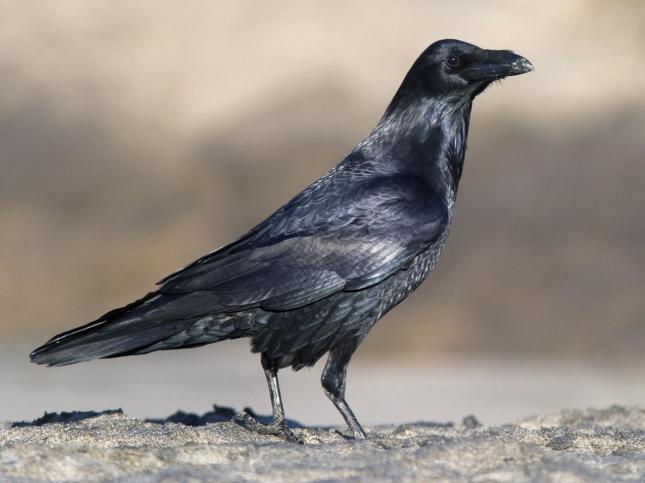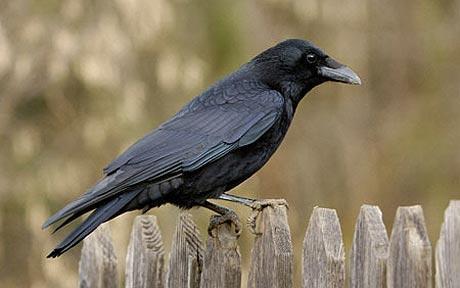

Crows and Ravens: Fun Facts
• During the winter, American Crows congregate at night in large communal roosts. These roosts range in size from a few hundred, several thousand, or even up to one million crows.
• The winter roosts of some American Crows have been located in the same area for well over 100 years.
• In recent decades, some American Crows have moved their winter roosts out of rural areas and into cities.
• Just as a flock of quail is called a “covey,” a group of crows is called a “murder.”
• Family groups may include over a dozen individuals from five different years.
• They vigorously mob owls and can tip off their location to alert birders for a closer look.
• Crows themselves are often mobbed by smaller birds, especially kingbirds and Red-winged Blackbirds.
• The loss of American Crows to the West Nile virus was the highest of any North American bird species. They die within a week of exposure and very few appear to be able to survive once infected.
• Shiny objects seem to fascinate crows. They have been known to fly off with bits of glass, rings, keys, and foil.
• Crows can imitate a large number of sounds including whistles, cats, machines and the human voice.
• Like a stunt pilot at an air show, the Common Raven often performs rolls and somersaults while flying. They have even been known to fly upside down for over a half a mile.
• Common Ravens will often “commute” up to 55 miles a day to reach good sources of food.
• Ravens are well adapted to cold weather. Thick soles on their feet and dense plumage allow them to maintain a normal metabolism until temperatures drop below -4°F.
• Common Raven pairs will try to exclude all other ravens from their year-round territories.
• The Common Raven often lines its nest with sheep wool and will cover its eggs with the wool when it leaves its nest.

